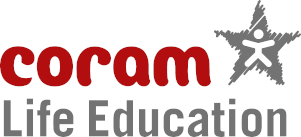Teaching and learning about rights
RRSA Outcome 1: Children, young people and the wider school community know about and understand the United Nations Convention on the Rights of the Child and can describe how it impacts on their lives and on the lives of children everywhere.*
Although SCARF promotes the rights of the child holistically across all of its lessons and the teaching methods it embeds, many of the UNCRC articles are explicitly addressed within specific lesson plans. We've listed the articles that have SCARF lesson plans which support them more explicitly, along with signposting to these lessons:
Articles and SCARF support for these
ARTICLE 2 (non-discrimination)
The Convention applies to every child without discrimination, whatever ethnicity, sex, religion, language, abilities or any other status, whatever they think or say, whatever their family background.
The Protected Characteristics guidance supports SCARF schools in evidencing their teaching and learning in relation to the principles underpinning this article.
ARTICLE 7 (birth registration, name, nationality, care)
Every child has the right to be registered at birth, to have a name and nationality, and, as far as possible, to know and be cared for by their parents.
Belonging toolkit, Captain Coram resources (suitable for 9-11 year-olds)
ARTICLE 8 (protection and preservation of identity)
Every child has the right to an identity. Governments must respect and protect that right, and prevent the child's name, nationality or family relationships from being changed unlawfully.
Belonging toolkit, Captain Coram resources (suitable for 9-11 year-olds)
ARTICLE 12 (respect for the views of the child)
Every child has the right to express their views, feelings and wishes in all matters affecting them, and to have their views considered and taken seriously. This right applies at all times, for example during immigration proceedings, housing decisions or the child’s day-to-day home life.
View the Feelings, Emotions and Belonging toolkit lesson plans.
ARTICLE 13 (freedom of expression)
Every child must be free to express their thoughts and opinions and to access all kinds of information, as long as it is within the law.
View the Assertiveness lesson plans.
ARTICLE 14 (freedom of thought, belief and religion)
Every child has the right to think and believe what they choose and also to practise their religion, as long as they are not stopping other people from enjoying their rights. Governments must respect the rights and responsibilities of parents to guide their child as they grow up.
View the Respect, Tolerance and British values lesson plans.
Article 15 (freedom of association)
Every child has the right to meet with other children and to join groups and organisations, as long as this does not stop other people from enjoying their rights.
View the Respect, Tolerance and British values lesson plans.
ARTICLE 16 (right to privacy)
Every child has the right to privacy. The law should protect the child’s private, family and home life, including protecting children from unlawful attacks that harm their reputation.
View the Privacy, Online Safety and Consent lesson plans.
ARTICLE 17 (access to information from the media)
Every child has the right to reliable information from a variety of sources, and governments should encourage the media to provide information that children can understand. Governments must help protect children from materials that could harm them.
View the Media influence lesson plans.
ARTICLE 24 (health and health services)
Every child has the right to the best possible health. Governments must provide good quality health care, clean water, nutritious food, and a clean
environment and education on health and well-being so that children can stay healthy. Richer countries must help poorer countries achieve this.
View the Healthy lifestyles, Healthy eating, Five ways to wellbeing and Mental wellbeing and mental health lesson plans.
ARTICLE 28 (right to education)
Every child has the right to an education. Primary education must be free and different forms of secondary education must be available to every child. Discipline in schools must respect children’s dignity and their rights. Richer countries must help poorer countries achieve this.
View the Captain Coram resources (suitable for 9-11 year-olds) and the Rules and laws lesson plans. The latter contain lessons about classroom rules, why these are important and how they support children's rights in school.
ARTICLE 29 (goals of education)
Education must develop every child’s personality, talents and abilities to the full. It must encourage the child’s respect for human rights, as well as respect for their parents, their own and other cultures, and the environment.
View the Growth mindset (including talents), Self-esteem, Rights, Citizenship, Captain Coram resources (suitable for 9-11 year-olds) and Community lesson plans.
ARTICLE 30 (children from minority or indigenous groups)
Every child has the right to learn and use the language, customs and religion of their family, whether or not these are shared by the majority of the people in the country where they live.
View the Diversity, Rights, Citizenship and Community lesson plans.
Article 31 (leisure, play and culture)
Every child has the right to relax, play and take part in a wide range of cultural and artistic activities.
View the Healthy lifestyles, Five ways to wellbeing, Mindfulness and Mental wellbeing and mental health lesson plans.
Article 34 (sexual exploitation)
Governments must protect children from all forms of sexual abuse and exploitation.
View the Privacy, Online Safety and Consent lesson plans and also SCARF and Keeping Children Safe in Education (KCSIE)
* Source: UNICEF - RRSA outcomes at silver and gold

